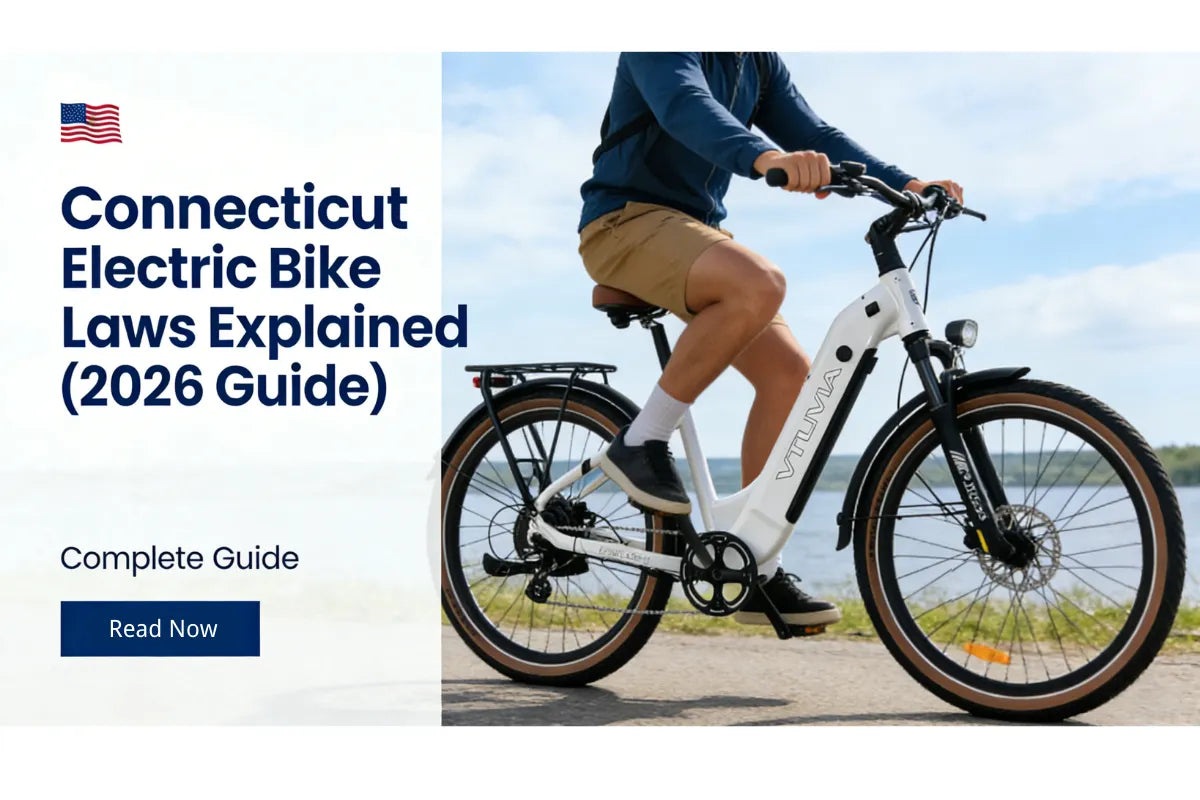When you ride an electric bike, the motor and battery are important — but the sensor system is what shapes how the bike actually feels. Below is a quick, clear breakdown of the three main sensors and why VTUVIA’s V-Adapt blends the best of them for a natural, comfortable ride.
Quick takeaway: Speed sensors give smooth cruise, cadence sensors keep a steady rhythm, and torque sensors deliver the most natural, bike-like response. V-Adapt intelligently combines sensors for the best real-world feel.
1. Speed Sensor — Smooth & Effortless
 A speed sensor measures how fast the wheel is turning. It signals the motor once the wheel moves, producing a gentle, predictable push — great for relaxed rides and city commutes.
A speed sensor measures how fast the wheel is turning. It signals the motor once the wheel moves, producing a gentle, predictable push — great for relaxed rides and city commutes.
- Best for: Casual riders and commuters who want easy starts and steady cruising.
- Limitation: Power can feel slightly mechanical and may cut off a moment after you stop pedaling.
2. Cadence Sensor — Rhythm & Reliability
 Cadence sensors detect how fast you pedal (pedal rotations per minute). The motor responds to pedal speed rather than pedal force, delivering consistent assistance that feels stable and easy to predict.
Cadence sensors detect how fast you pedal (pedal rotations per minute). The motor responds to pedal speed rather than pedal force, delivering consistent assistance that feels stable and easy to predict.
- Best for: Flat-ground commuting and riders who want a steady, consistent assist.
- Limitation: Less adaptive on hills and does not account for how hard you’re pushing.
3. Torque Sensor — Natural & Responsive
 A torque sensor measures the force you apply to the pedals. The motor scales output instantly based on your effort — the harder you push, the more assistance you get. The result is the most natural, bike-like experience.
A torque sensor measures the force you apply to the pedals. The motor scales output instantly based on your effort — the harder you push, the more assistance you get. The result is the most natural, bike-like experience.
- Best for: Hill climbing, long rides, and riders who want a seamless extension of their pedaling.
- Limitation: Usually costs more and requires careful calibration for optimal feel and efficiency.
4. V-Adapt — Blending the Best of Both Worlds

V-Adapt intelligently blends the strengths of both torque and speed sensors. Through precise engineering and fine calibration, it continuously analyzes your pedaling speed and pressure in real time, adjusting motor output to deliver the perfect amount of power—no more, no less.
On flat roads, it offers smooth, effortless cruising. On hills, it naturally boosts your power, easing every climb. During long rides, it delivers energy efficiently, extending your range while keeping your pedaling natural and comfortable. It’s not just technology—it’s intuition on two wheels.
5. Which Sensor Should You Choose?
With V-Adapt, every ride feels balanced and connected. The system doesn’t push you too hard or leave you doing all the work—it moves with you. Start-ups are smoother, climbs feel easier, and the power delivery stays linear and precise.

Picture yourself gliding along a quiet coastal road: the motor hums softly beneath you, wind in your face, your effort and power working in perfect harmony. That’s the V-Adapt experience—smooth, natural, and uniquely yours.
6. FAQ
Q: What is the main difference between a speed sensor and a torque sensor?
A: A speed sensor reacts to wheel rotation speed; a torque sensor reacts to how hard you pedal. Torque sensors give a more natural, proportional response.
Q: Is a torque sensor worth the extra cost?
A: If you ride hills often, want a bike-like feel, or do long rides, a torque sensor (or a dual-sensor system like V-Adapt) is worth it.
Q: Will a torque sensor save battery?
A: Properly tuned torque systems can be more efficient because they only supply power proportional to effort — which can help range in real-world riding.
Try V-Adapt on these VTUVIA electric bikes:





Share:
Explore Trails Like a Pro with VTUVIA SN100 Hunting Electric Bike
How Much Does E‑Bike Insurance Cost in the U.S.